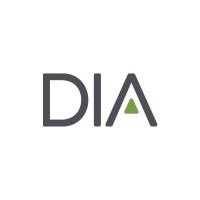March 27, 2024

When biopharma companies test novel therapies in clinical trials, the primary focus of the research is on determining if the intervention works, with the goal of achieving FDA approval to enter the market. But there’s another part of clinical development that must not be neglected: health economics and outcomes research (HEOR), a multidisciplinary approach to evaluating the economic and clinical outcomes of healthcare interventions.
Sponsors that skip this step could develop a safe and effective novel drug but fail to effectively commercialize it because payers don’t recognize its cost/benefit improvement over existing options and do not cover it. Expensive therapies and diagnostics could therefore be out of reach for patients. Patients holding on to the promise of a new therapeutic solution are devastated, leading to negative sentiment against the sponsor. On the other hand, sponsors that demonstrate positive economic impact to payers early on could simultaneously bring their drug to market faster (without the requirement of additional studies) and to more patients at launch. Everybody wins.
Even HEOR analysis that shows financial strain provides sponsors with vital data to inform the creation of drug pricing strategies and copay assistance programs to circumvent any negative consequences. Depending on the trial phase and therapeutic area, economics data empowers sponsors to make smarter decisions around whether to modify the protocol design for future trials for additional indications or, post-FDA approval, to change their marketing strategies.
Historically, HEOR has not been prioritized because it is an additional step in an already multi-year and multi-million-dollar clinical trial process. HEOR analysis requires large amounts of data from sources such as hospitals, pharmacies and payers, which has been difficult to capture efficiently. But with the recent growth of decentralized clinical trials (DCTs), HEOR can and should be prioritized. DCTs are inherently more flexible because they are not reliant on physical sites and, therefore, can capture data virtually anywhere—and in the real world rather than an office setting, for greater accuracy.
I co-founded Curavit, a virtual contract research organization (CRO) that designs and executes DCTs, and have seen firsthand the benefits of HEOR analysis included as a natural extension of evidence generation in clinical research.
The Importance of HEOR
HEOR can play a critical role in bringing new drugs to patients by providing insights on the economic implications associated with novel therapies. The maturation of claims and health information exchanges (HIEs) now enables a cost-effective and straightforward process for drug researchers to compliantly access patients’ data. Trial sponsors can take advantage of these exchanges and leverage the data at scale for both pre-screening and health economics analysis. Another development facilitating HEOR is the accelerating acceptance of decentralized/digital trial and virtual site models that make it easier to incorporate this analysis without conducting a new, standalone study.
HEOR informs analyses of cost-effectiveness, health-related quality of life and broader analyses of the impact a new therapy can have on hospital and community clinic costs. This is particularly important with today’s shift toward value-based healthcare, which focuses on delivering the best possible outcomes for patients relative to the cost of care. Value-based care could double in value from $500 billion to $1 trillion, according to a McKinsey analysis—a powerful indication of the healthcare system’s trajectory. The rising cost of healthcare is a concern for everyone—patients, payers, practitioners and politicians. Capturing evidence of the economic value of a product, both as it pertains to individual patients and the broader population, has never been more important.
Show Me the Money: The Benefits of Using DCTs for HEOR Analysis
Jerry Maguire’s iconic line in the 1996 movie with the same name was as raw and true in the world of sports management as it is in today’s pharmaceutical world. In line with the growing use of DCTs, Curavit is seeing burgeoning interest from sponsors in health economic studies, particularly in Phase IV trials. These late-stage trials are designed to capture long-term impact data on the efficacy, durability and financial impact of an investigational drug and therefore align with a DCT model.
The advantages of using DCTs to gather HEOR data include real-world relevance: since DCTs generate evidence in diverse patient populations and settings, they reflect the complexities of routine clinical practice. HEOR leverages this data to assess the generalizability and long-term outcomes of pharmaceutical interventions, informing healthcare policy and practice.
Another plus of DCTs is faster market access. HEOR evidence expedites market access by providing stakeholders with comprehensive insights into an intervention’s value proposition, but many sponsors skip this step because it can be too daunting to gather this evidence before it goes to market. By leveraging the flexibility and efficiency of a decentralized model for research, sponsors can demonstrate cost-effectiveness and favorable outcomes to streamline not only regulatory approvals (both initial and for additional indications) but also reimbursement negotiations.
This is particularly applicable to large pharmaceutical companies that are making new investments in novel digital healthcare applications, sometimes as diagnostic tools but often as companion therapies to traditional medications. These unique digital therapeutics have been struggling to secure market access and payer coverage, but by incorporating HEOR analysis in clinical trials, sponsors can gain the evidence they need to secure coverage.
What does this look like in practice? Consider a global pharmaceutical company conducting a DCT to evaluate a novel medication for a chronic condition such as diabetes. By integrating HEOR into the protocol design, the sponsor can identify economic endpoints, such as healthcare utilization, medication adherence and quality-adjusted life years (QALYs), to assess the intervention’s current economic impact. From there, the same sponsor can develop intelligent health economic models to estimate the long-term cost-effectiveness of the intervention and broader economic impact on the healthcare system.
How to Incorporate HEOR Analysis into a DCT
|
Invest in Knowledge for ROI
Benjamin Franklin once said, “An investment in knowledge pays the best interest.” As sponsors pour upward of $50-$150 million dollars into each Phase IV trial (not to mention the cost of earlier-stage drug development), incorporating HEOR analysis up front in a decentralized trial is like buying an insurance policy for a return on that investment. It provides not only efficacy data but also financial knowledge.
As DCTs continue to evolve, leveraging HEOR will be essential in maximizing the impact of new pharmaceutical interventions across today’s value-based healthcare environment. Make HEOR analysis a part of the protocol design from the start and continue integrating HEOR methodologies throughout the trial to enhance decision-making, improve patient outcomes and expedite market access for innovative treatments.
Joel Morse is co-founder and CEO of Curavit, a virtual contract research organization that designs and executes decentralized clinical trials.










